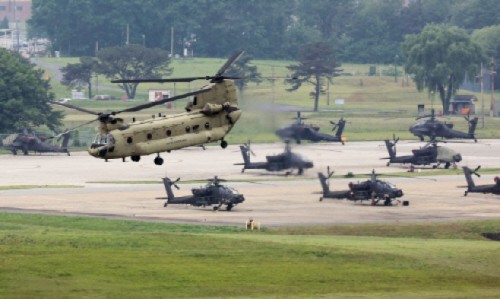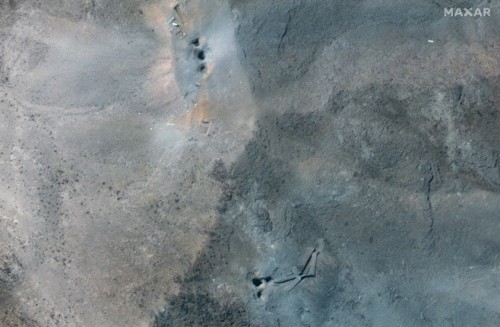 |
| A CH-47 Chinook helicopter moves across Camp Humphreys, the largest overseas U.S. military base, in Pyeongtaek, Gyeonggi Province, on May 21, 2024. / Source: Yonhap News |
The U.S. Department of Defense emphasized on July 2 that the United States remains firmly committed to its alliance with South Korea, amid ongoing questions about a potential reduction of U.S. forces stationed on the Korean Peninsula under the Trump administration.
Pentagon spokesperson Sean Parnell, speaking during a press briefing at the Pentagon in Arlington, Virginia, declined to directly confirm or deny whether a drawdown of U.S. Forces Korea (USFK) is under consideration. “As a general matter, we do not comment on military posture reviews from this podium,” he said.
However, Parnell reaffirmed the U.S. position by stating, “We have a rock-solid alliance with South Korea, and we will continue to honor that alliance.”
His comments come in response to a May 22 report by The Wall Street Journal, which cited Pentagon officials as saying the department was exploring a plan to relocate approximately 4,500 troops from South Korea to other Indo-Pacific locations, including Guam.
 |
| Satellite imagery from Maxar Technologies shows multiple impact craters caused by U.S. bunker-buster bombs at Iran’s Fordow uranium enrichment facility following airstrikes on June 22. / EPA–Yonhap News |
The following day, Parnell dismissed the report, saying, “The Department of Defense is not planning to reduce U.S. forces in Korea. The United States remains firmly committed to the defense of South Korea, and we look forward to working with the incoming administration in Seoul to maintain and strengthen our ironclad alliance.”
Separately, Parnell also addressed the U.S. military’s June 22 airstrikes on Iran, confirming that the operation set back Tehran’s nuclear program by at least one to two years, possibly closer to two. The Pentagon’s internal assessment marks the first official estimate of the strike’s impact.
The strike, dubbed “Midnight Hammer,” involved seven B-2 stealth bombers deploying 14 GBU-57 bunker-buster bombs, along with Tomahawk cruise missiles launched from submarines. The precision-guided munitions targeted Iran’s key nuclear facilities at Fordow, Natanz, and Isfahan—inflicting substantial damage.
However, the extent of the damage has been disputed. President Trump and Defense Secretary Pete Hegseth claimed the strikes “completely destroyed” Iran’s nuclear program, while outlets like The New York Times and CNN cited early Defense Intelligence Agency (DIA) assessments suggesting a more limited setback of several months.
Most Read
-
1
-
2
-
3
-
4
-
5
-
6
-
7





















